⭐️前面的话⭐️
本篇文章将介绍Spring项目的创建,IDEA国内源的配置以及Bean的存储与读取,所谓的Bean其实就是对象的意思,更详细地说Spring Bean是被实例的,组装的及被Spring 容器管理的Java对象。
📒博客主页:未见花闻的博客主页
🎉欢迎关注🔎点赞👍收藏⭐️留言📝
📌本文由未见花闻原创,CSDN首发!
📆首发时间:🌴2022年7月24日🌴
✉️坚持和努力一定能换来诗与远方!
💭推荐书籍:📚《Spring实战》
💬参考在线编程网站:🌐牛客网🌐力扣
博主的码云gitee,平常博主写的程序代码都在里面。
博主的github,平常博主写的程序代码都在里面。
🍭作者水平很有限,如果发现错误,一定要及时告知作者哦!感谢感谢!
📌导航小助手📌
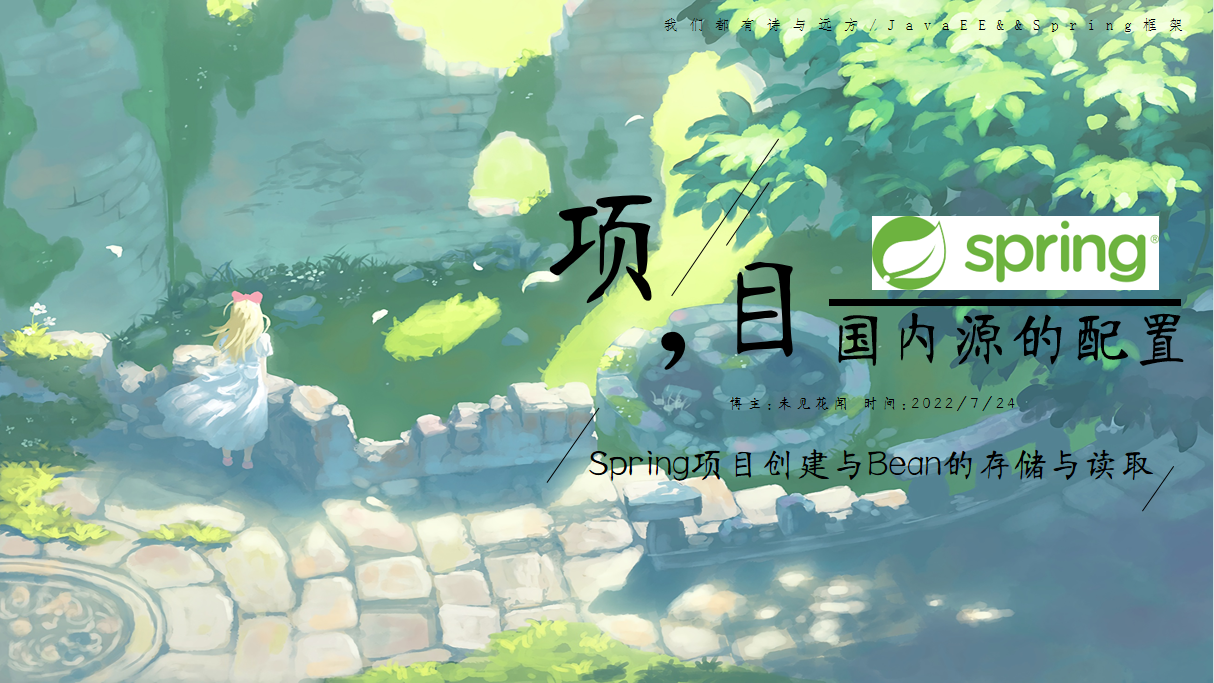
本文思维导图: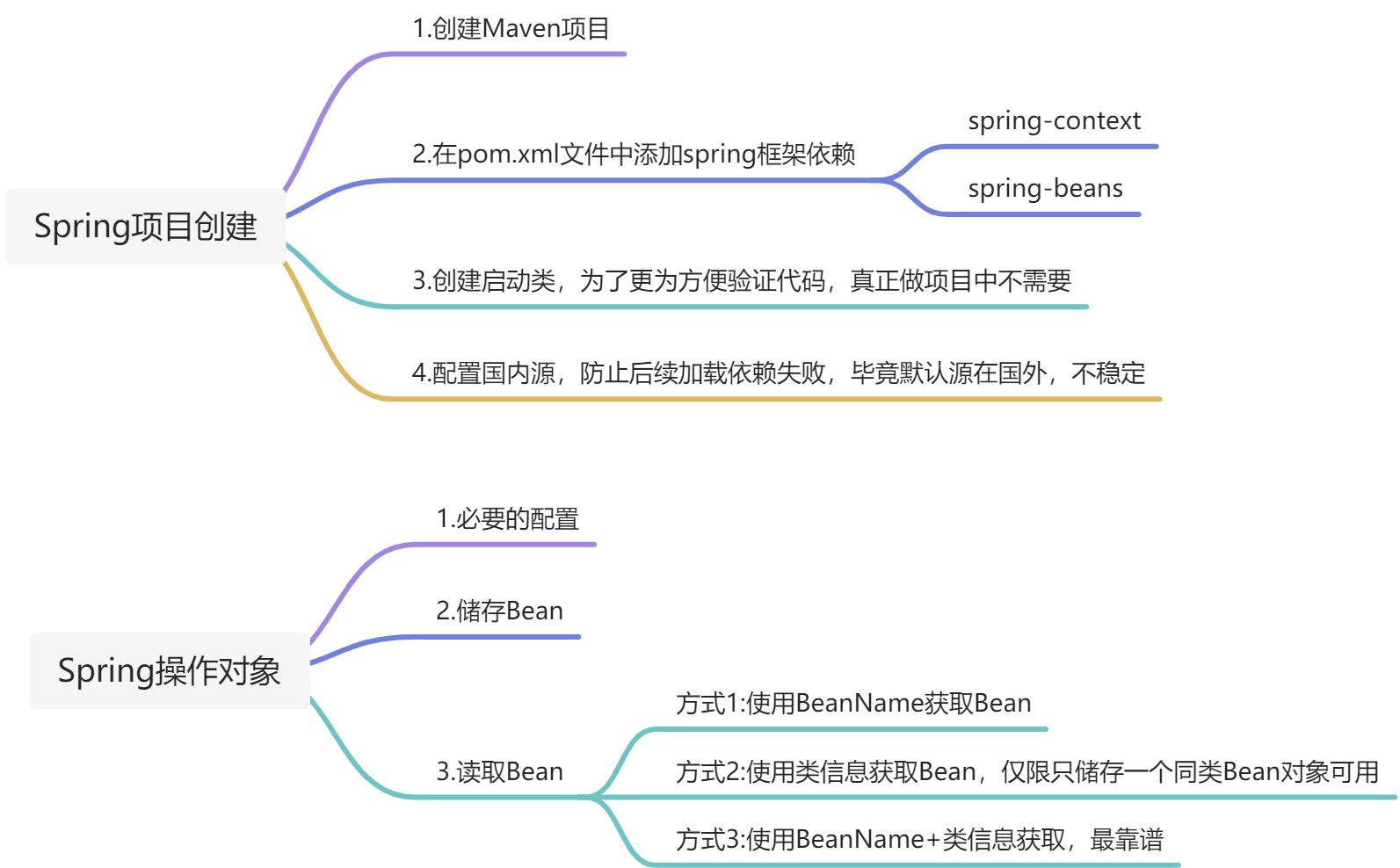
1.Spring项目的创建
1.1创建Maven项目
第一步,创建Maven项目,Spring也是基于Maven的。
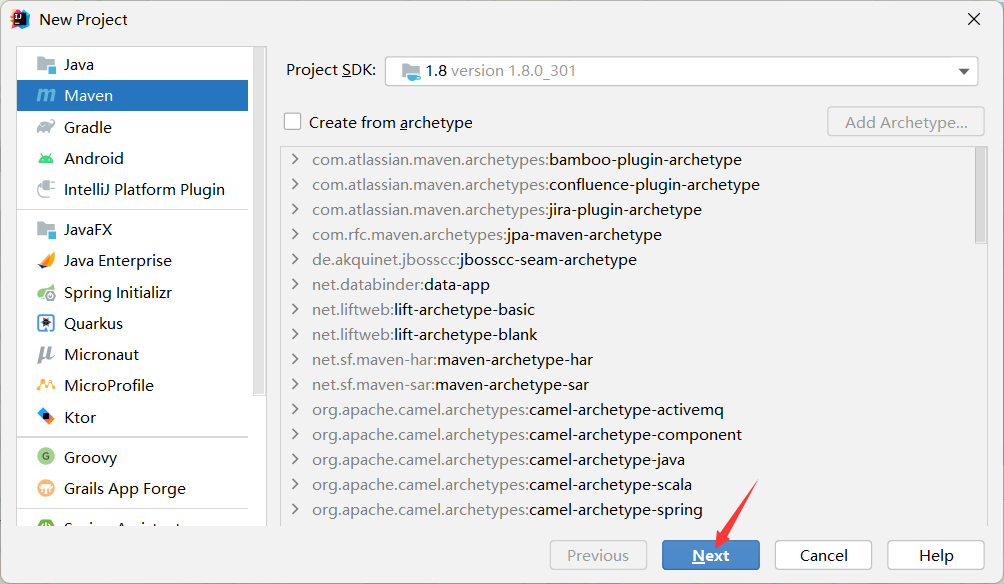
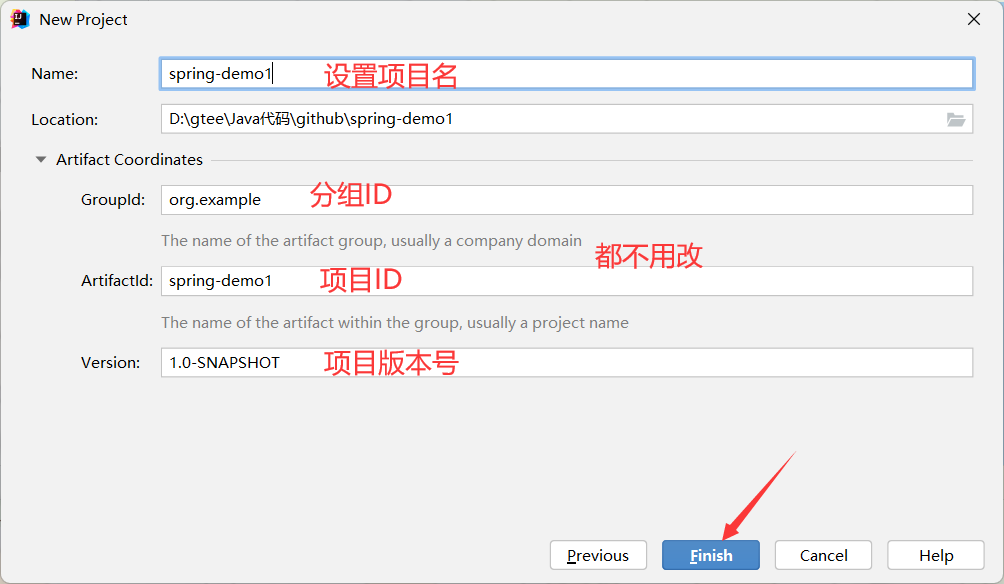
1.2添加spring依赖
第二步,在Maven项目中添加Spring的支持(spring-context, spring-beans)
在
pom.xml
文件添加依赖项。
<dependencies><dependency><groupId>org.springframework</groupId><artifactId>spring-context</artifactId><version>5.2.3.RELEASE</version></dependency><dependency><groupId>org.springframework</groupId><artifactId>spring-beans</artifactId><version>5.2.3.RELEASE</version></dependency></dependencies>
刷新等待加载完成。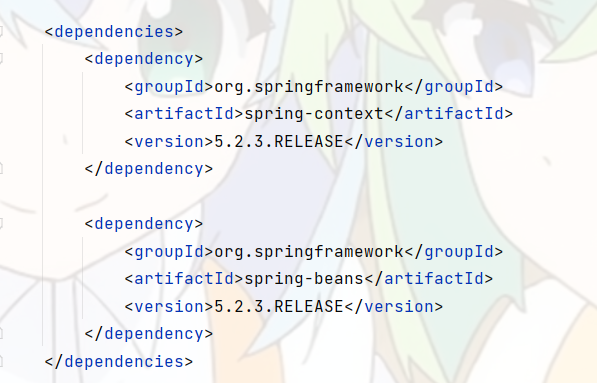
1.3创建启动类
第三步,创建启动类与main,用来做简单的测试
在java目录创建类,写代码即可,因为这里只演示怎么创建Spring项目和介绍Spring的简单使用,就不依赖那些Tomcat什么的了,直接写一个Main类更直观。

1.4配置国内源
由于国外源不稳定,可能第二步引入spring依赖会失败,所以下面介绍如何配置国内镜像源。
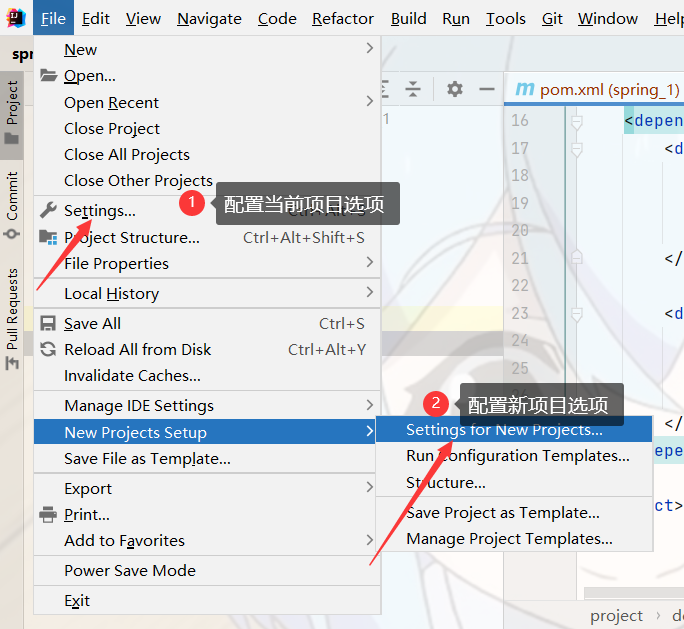
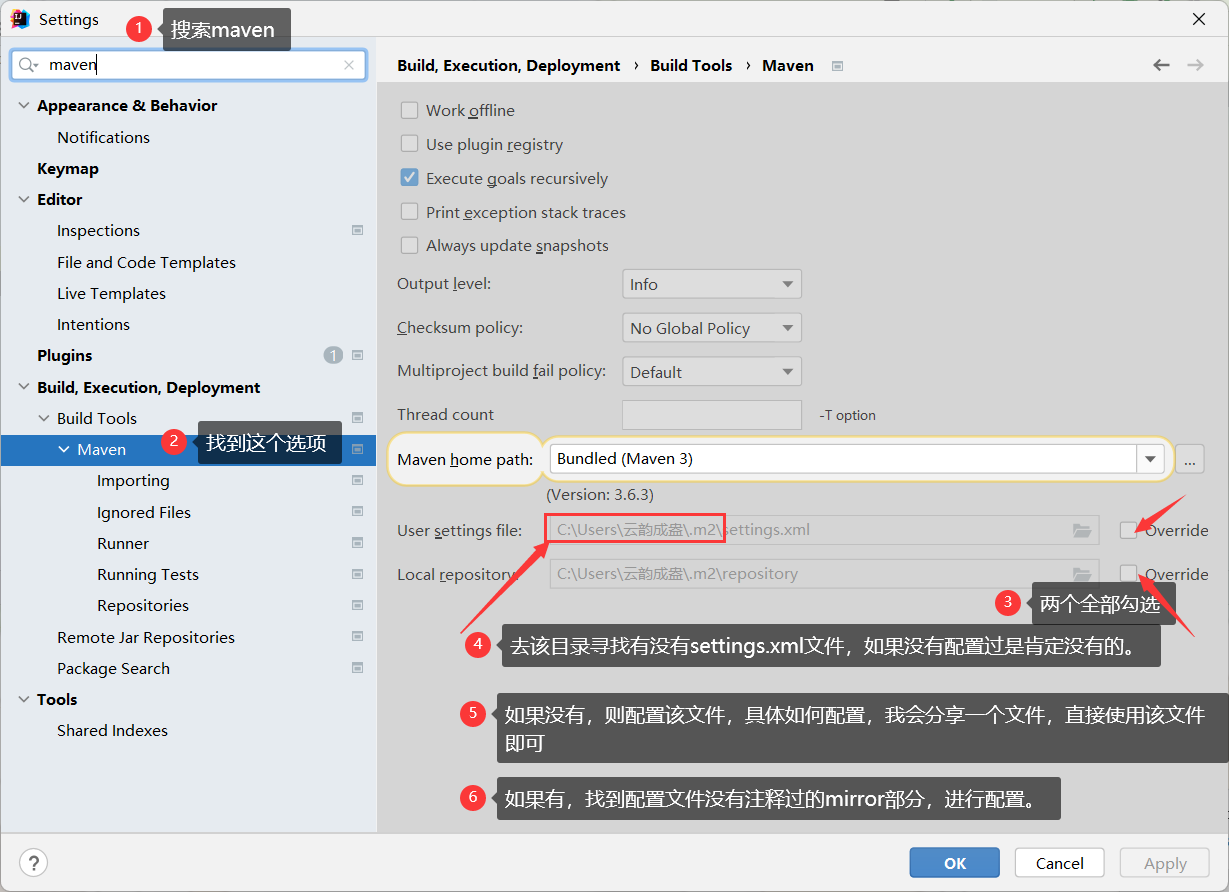
现成的settings.xml文件链接:
地址1:github
地址2:语雀
如果你已经有了settings文件,但没有配置
mirror
,配置内容如下:
<mirror><id>alimaven</id><name>aliyun maven</name><url>http://maven.aliyun.com/nexus/content/groups/public/</url><mirrorOf>central</mirrorOf></mirror>
2.储存或读取Bean对象
2.1添加spring配置文件
添加spring配置文件(首次才需要,非首次可忽略此步骤)
右键resources目录,新建一个
.xml
配置文件,文件名推荐
spring.xml
或者
spring-config.xml
。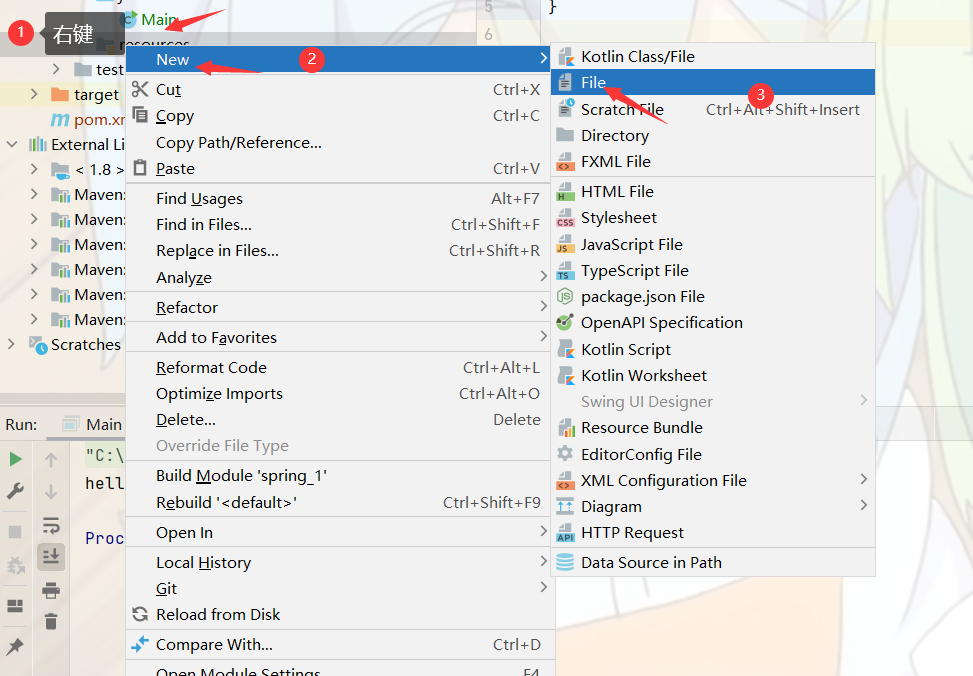
创建一个spring.xml配置文件,配置内容:
<?xml version="1.0" encoding="UTF-8"?><beans xmlns="http://www.springframework.org/schema/beans"
xmlns:xsi="http://www.w3.org/2001/XMLSchema-instance"
xsi:schemaLocation="http://www.springframework.org/schema/beans http://www.springframework.org/schema/beans/spring-beans.xsd"></beans>
2.2创建Bean对象
第一步,创建
Bean
对象。
比如我们要注入一个
User
对象,就先的创建一个
User
类。
packagecom.bean;publicclassUser{publicvoidsayHi(String name){System.out.println("你好!"+ name);}}
将
Bean
通过配置文件,注入到spring中,即在spring配置文件中通过以下语句注入。
<bean id="user"class="com.bean.User"></bean>
spring中对象的储存是通过键值对来存储的,其中
key
为
id
,
value
为
class
。
命名规范:
id
使用小驼峰命名,如
userid
,
class
使用大驼峰命名,如
userId
。
2.3读取Bean对象
想要从spring中将
Bean
对象读取出来,先要得到spring上下文对象,相当于得到了spring。再通过spring上下文对象提供的方法获取需要使用的
Bean
对象。最后就能使用
Bean
对象了。
importcom.bean.User;importorg.springframework.context.ApplicationContext;importorg.springframework.context.support.ClassPathXmlApplicationContext;publicclassMain{publicstaticvoidmain(String[] args){//1.得到上下文对象ApplicationContext context =newClassPathXmlApplicationContext("spring.xml");//2.获取bean对象,此处是根据id获取User user =(User) context.getBean("user");//3.使用bean
user.sayHi("zhangsan");}}
运行结果:
你好!zhangsan
Process finished withexit code 0
还可以使用Bean工厂(旧)来获取Bean。
importcom.bean.User;importorg.springframework.beans.factory.BeanFactory;importorg.springframework.beans.factory.xml.XmlBeanFactory;importorg.springframework.core.io.ClassPathResource;publicclassMain2{publicstaticvoidmain(String[] args){//1.得到Bean工厂BeanFactory factory =newXmlBeanFactory(newClassPathResource("spring.xml"));//2.获取BeanUser user =(User) factory.getBean("user");//3.使用
user.sayHi("李四");}}
虽然Bean工厂XmlBeanFactory类现在已经废弃了,但是目还能使用的,当然创建Bean工厂有新的方式,但老的方式比较直观,因此演示采用老的方式创建。
运行结果:
你好!李四
Process finished withexit code 0
发现
ApplicationContext
与
BeanFactory
都可以从容器中获取
Bean
,都提供了
getBean
方法,那问题来了,
ApplicationContext
与
BeanFactory
有什么区别?
相同点:都可以从容器中获取
Bean
,都提供了
getBean
方法。
不同点:
BeanFactory是ApplicationContext的父类,BeanFactory只提供了基础访问Bean对象的功能,而ApplicationContext除了拥有BeanFactory的全部功能,还有其他额外功能的实现,如国际化,资源访问等功能实现。- 从性能方面来说是不同的,
BeanFactory按需加载Bean,属于懒汉方式,ApplicationContext是饿汉方式,在创建时会将所有的Bean都加载,以备使用。
证明:
我们在bean目录下添加一个
Blog
类,并完善
Blog
与
User
类的构造方法,当类被构造时会发出一些信号,在获取上下文或工厂时根据这些信号让我们感知到它是否会被构造。
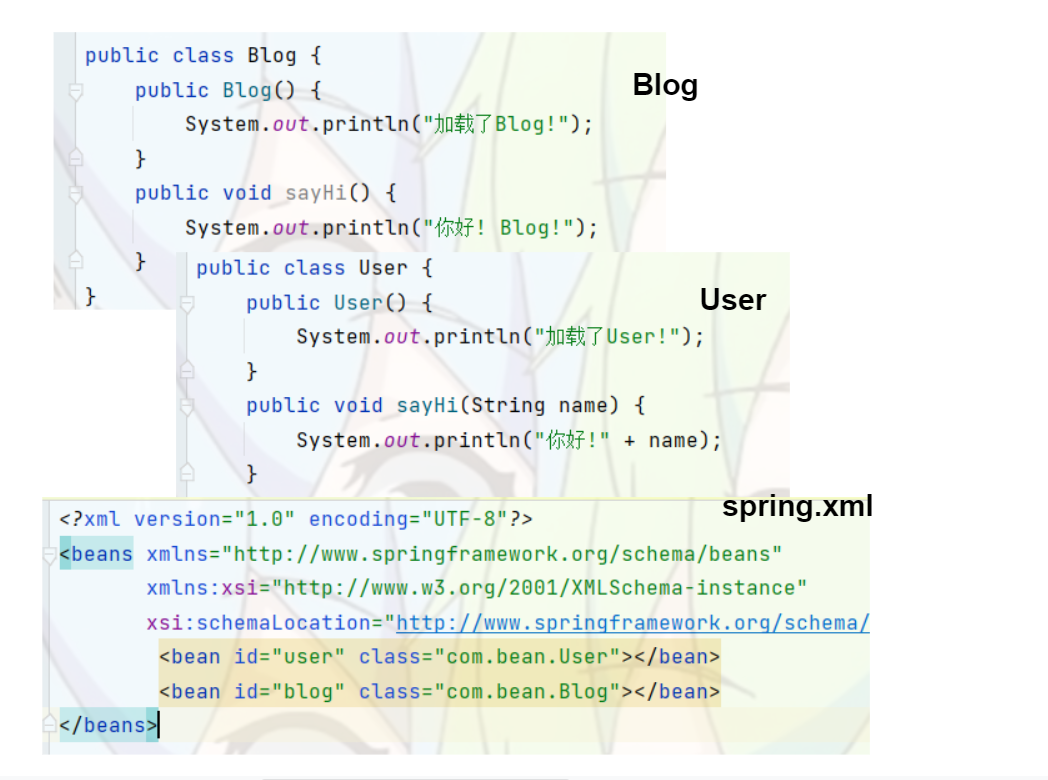
importorg.springframework.context.ApplicationContext;importorg.springframework.context.support.ClassPathXmlApplicationContext;publicclassMain3{publicstaticvoidmain(String[] args){//1.得到上下文对象ApplicationContext context =newClassPathXmlApplicationContext("spring.xml");}}
运行结果: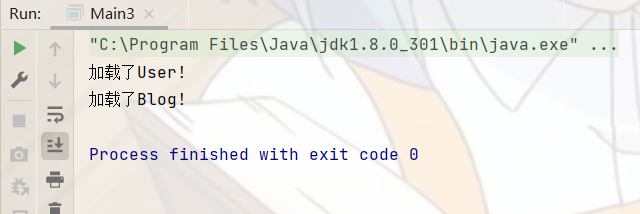
ApplicationContext创建时,会将所有的对象都构造,饿汉的方式。
importorg.springframework.beans.factory.BeanFactory;importorg.springframework.beans.factory.xml.XmlBeanFactory;importorg.springframework.core.io.ClassPathResource;publicclassMain4{publicstaticvoidmain(String[] args){//1.得到Bean工厂BeanFactory factory =newXmlBeanFactory(newClassPathResource("spring.xml"));}}
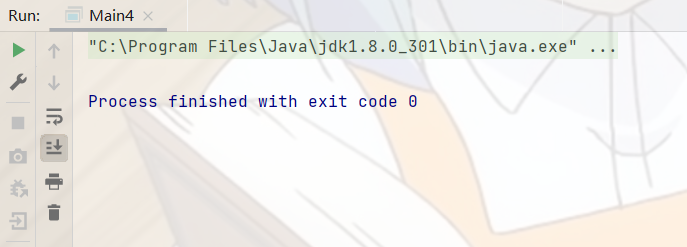
BeanFactory创建时,什么都没有,说明是懒汉的方式。
ApplicationContext
中的多种
getBean
方法:
方法1:根据
bean name
获取
bean
。
User user =(User) context.getBean("user");
方法2:根据
bean type
获取
bean
。
User user =(User) context.getBean(User.class);
只有beans中只有一个类的实例没有问题,但是个有多个同类的实例,会有问题,即在spring中注入多个同一个类的对象,就会报错。
我们来试一试,首先在Spring配置文件,注入多个
User
对象:
然后我们再通过这种方式来获取对象,我们发现报错了,报错信息如下:
Exception in thread "main"org.springframework.beans.factory.NoUniqueBeanDefinitionException:No qualifying bean of type 'com.bean.User' available: expected single matching bean but found 3: user,user1,user2
抛出了一个
NoUniqueBeanDefinitionException
异常,表示注入的对象不是唯一的。
方法3:综合上述两种,可以根据
bean name
与
bean type
来获取
bean
相比方法1,更加健壮。
User user = context.getBean("user",User.class);
小结: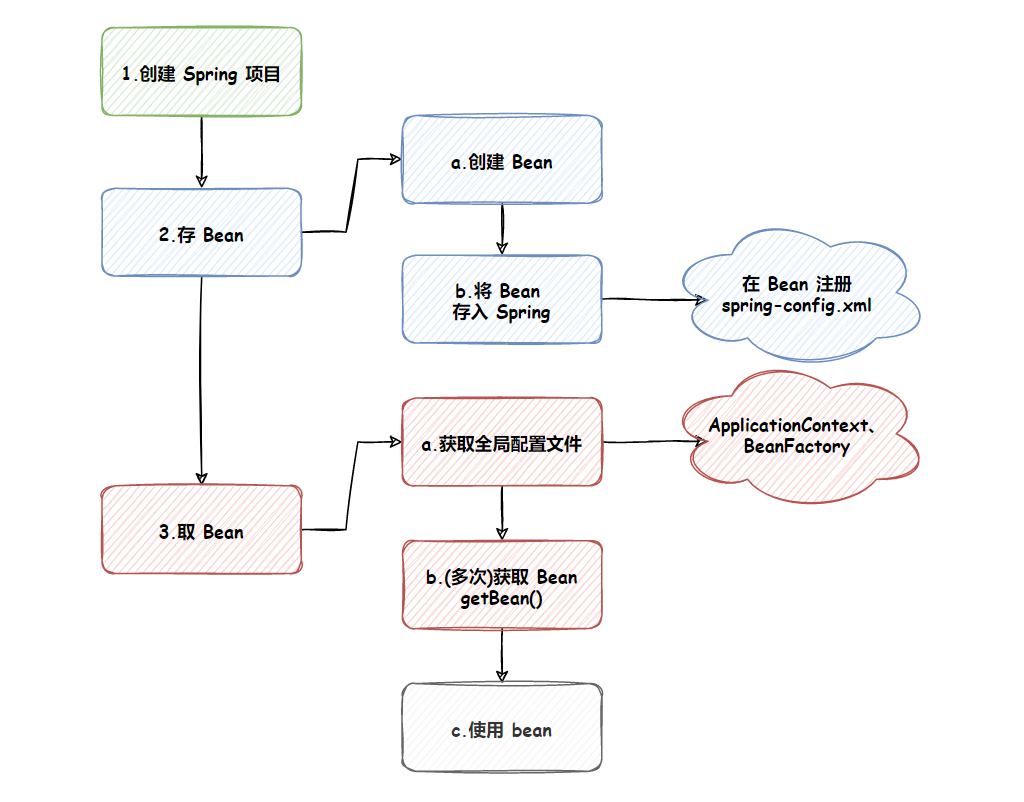
觉得文章写得不错的老铁们,点赞评论关注走一波!谢谢啦!
版权归原作者 未见花闻 所有, 如有侵权,请联系我们删除。